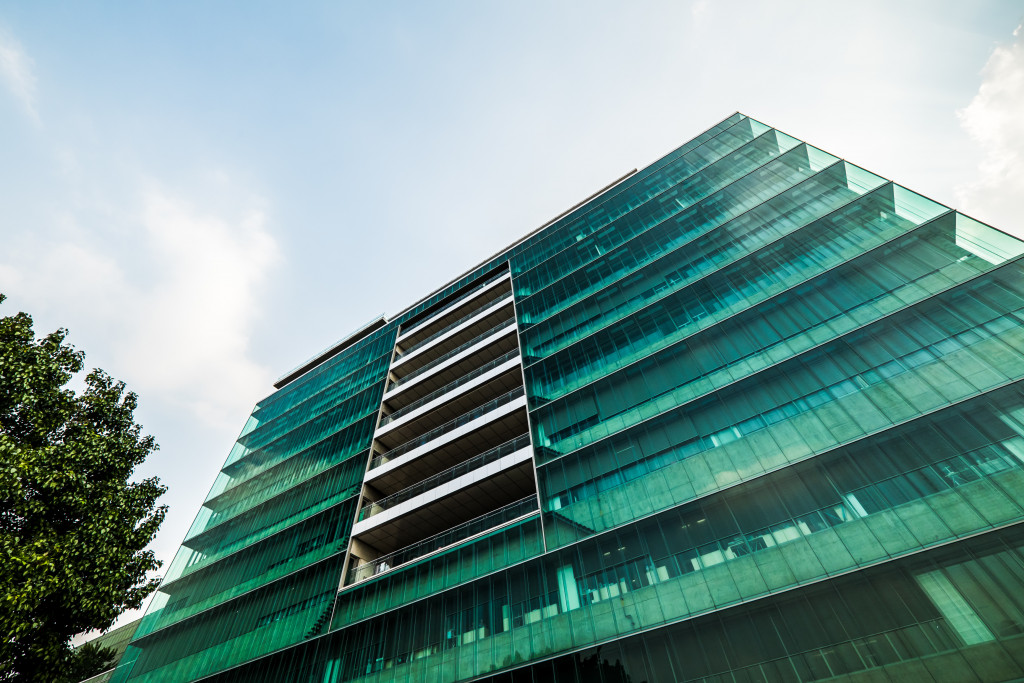As the consequences of the warming planet are felt all over the world, there is a growing movement of people who reject the old ways in favor of options that are better for the environment. They are choosing to eat vegetarian or vegan meals, buying second-hand clothes and furniture, riding an electric vehicle or taking public transportation, switching to renewable sources of energy, and living in a sustainable building.
The need to act on climate change is influencing architectural design. For years now, more and more sustainable buildings have been constructed all over the world.
While a huge chunk of greenhouse gas emissions is attributed to large corporations, individual households are also primary contributors. In the United States, households are accountable for over 20 percent of all emissions. In total, American households generate 5.43 gigatons of carbon dioxide per year. Housing is the biggest source of household emissions in the U.S.
So, what if the house you live in is actively helping you lower your emissions? Buildings that are sustainable are designed to do just that. They minimize their environmental impact.
Each sustainable building is different and, often, they are indistinguishable from other residential structures. However, here are a few factors that they employ to lower their carbon footprint.
Efficiency in Energy and Water Use
The biggest source of emissions in American households is electricity. The U.S. still largely relies on non-renewable sources for electricity which generates greenhouse gases. While there have been efforts to increase the use of clean energy, the nation is still far from achieving 100 percent renewable electricity. In fact, estimates say that the U.S. will replace all existing energy with solar, wind, and water by 2050.
For now, what American households can do is to choose designs that will reduce their consumption of energy. Most sustainable buildings offer that feature.

These buildings integrate designs that improve energy efficiency such as double-glazed glass windows to create insulation for cold months and roof vents to allow the heat to escape for hot months. These buildings also often have the hot water system placed where hot water is supposed to come out to prevent heat loss.
In addition, these structures should have a strategy in place to conserve water. Water is a finite resource. Households should reuse and recycle water whenever possible. Some trap rainwater to use for watering plants or for laundry. Rainwater is clean and safe.
Using Sustainable Building Materials
Concrete is a commonly-used building material. However, the production of concrete materials releases tons of carbon dioxide into the atmosphere. There are better alternatives out there with minimal impact on the environment.
Eco-friendly buildings use green construction materials as much as possible without compromising integrity. Reclaimed wood and steel, bamboo, straw bales, and a new material called mycelium, which is from fungi and mushrooms, are better for the environment.
Minimally-Altered Landscape
An architect who values the environment does not seek to destroy it with development. They find ways to integrate it into the design.
A great example is the ACROS Fukuoka Prefectural International Hall. Back in the ‘90s, the people of Fukuoka in southern Japan were livid that they would lose the last green space in the center of their town. The architect of the project, Emilio Ambasz, found a way to maintain the green public space. He designed the building to be a part of the park by incorporating 15 garden terraces filled with greens. While a building was erected in the same space, the public did not lose their park.
Buildings should work by incorporating the natural environment into their design. While adding green spaces for residents will still be good for the planet, using what was there before the development will be better.
Because native plants are accustomed to the climate, they are resilient to environmental factors and often are self-sustaining. They can subsist on rainfall alone. Once established, native plants will not need fertilizer or pesticide. They require less care and eliminate the need for mowers or other gardening equipment.
Moreover, native plants maintain local biodiversity. They provide shelter for wildlife such as bees, butterflies, and birds. They also cater to other small animals and microscopic organisms that make up a healthy ecosystem.
In the future, more buildings should be sustainable. At this point, the world can no longer afford to keep erecting structures without considering their impact on the environment. The consequences of climate change are already felt around the world. Homeowners, architects, and developers should choose options that benefit the planet.

